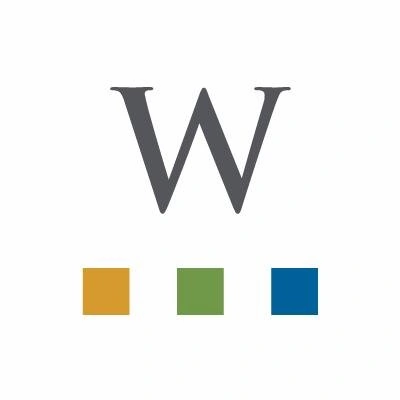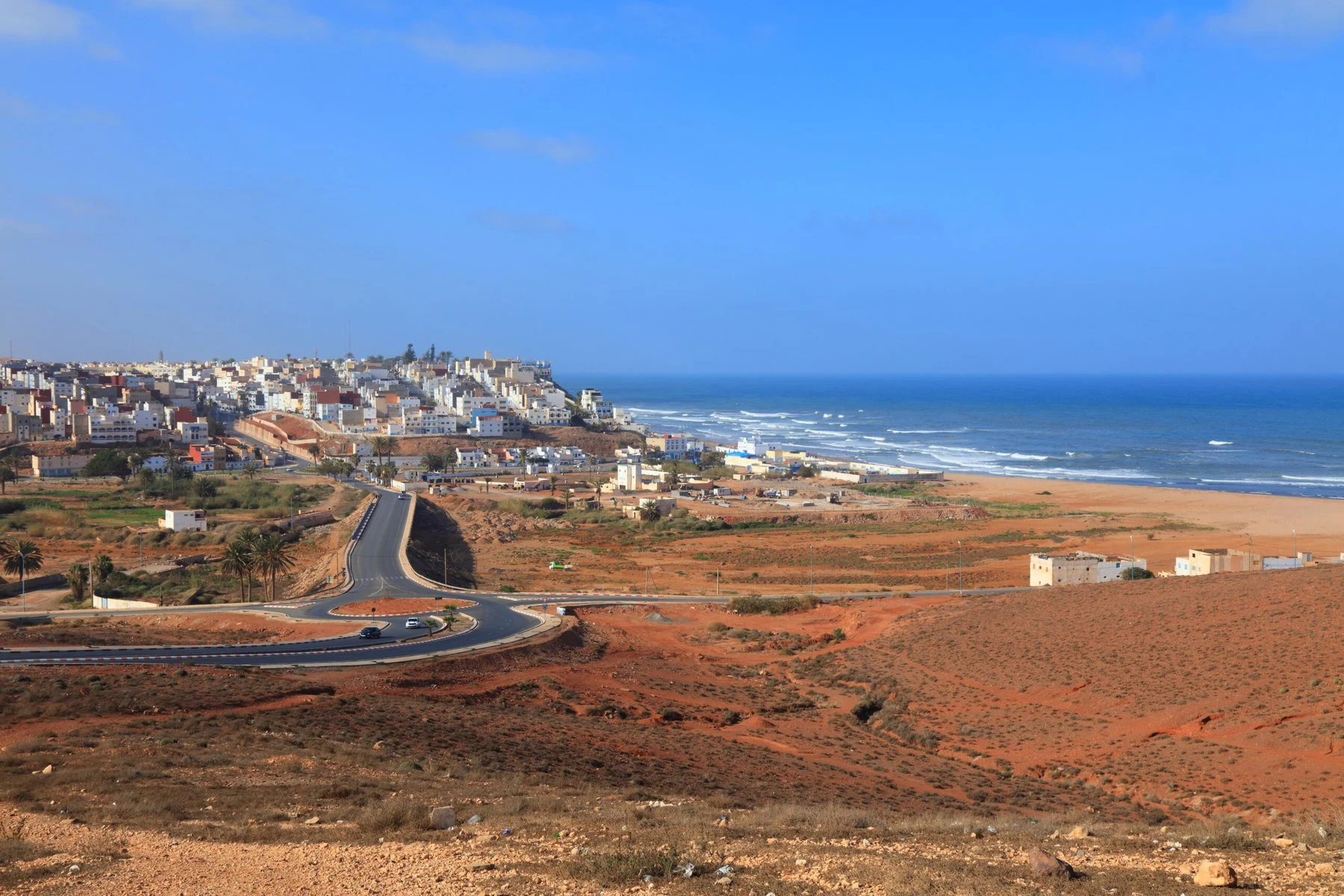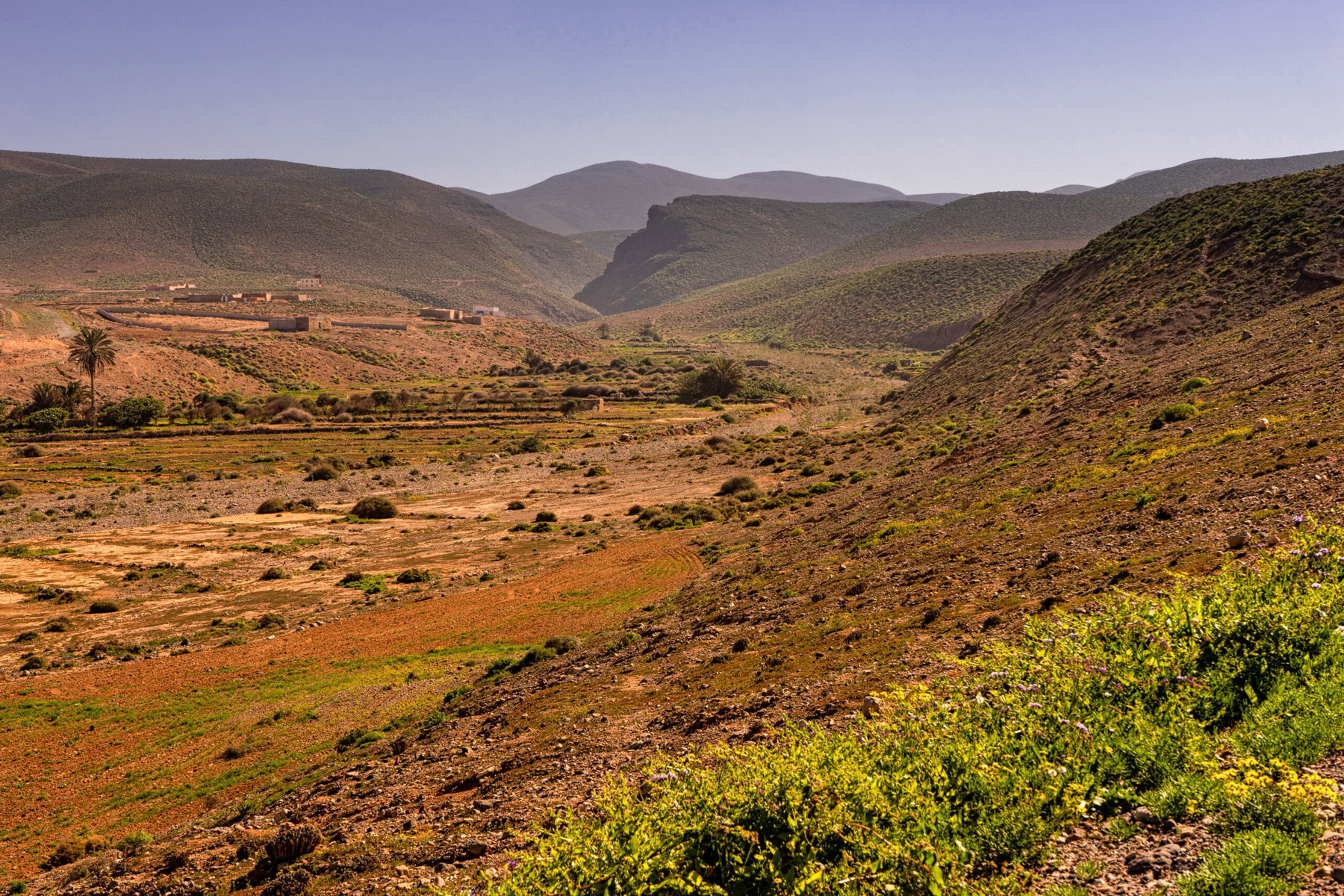



Waterline is an ongoing series of stories exploring the intersection of water, climate and food, told through the eyes of the people impacted by these issues. It is funded by a grant from the Walton Family Foundation.
Ibrahim Fajea’s family is one of 131 families remaining in a small community of subsistence farmers in Sidi Ifni on the west coast of Morocco, on the shores of the Atlantic Ocean. Nestled in the north African country’s Guelmim province, Fajea’s land has suffered from a debilitating drought for almost six years, which drove many farmers away.
Originally from Tighmert, about 75 kilometers south of Sidi Ifni, the 42-year-old and his family of five have been struggling to keep food on the table.
“When the water dried up in the oasis many families were forced to leave,” Fajea says. “I worked with a few people in our farmers’ collective to dig three wells to use groundwater for irrigation.”


But keeping farming alive in this region requires more than just wells. That’s why Fajea is one of a hundred farmers participating in an ecological seed bank initiative by Dar Si Hmad Foundation to help his farming community. Launched in 2021 in Sidi Ifni, the seed bank sources indigenous seeds from across Morocco and Europe. By focusing on traditional, drought-resistant varieties and carefully storing the seeds, the seed bank — and an accompanying training program for farmers — is helping to revive the land and improve the livelihoods of those who rely on it.
A report published by the European Union’s Joint Research Council (JRC) in February warned that after six years of drought, including over two years of severe drought, Morocco has been designated as an area of “severe concern.”
The drought has taken a toll on Morocco’s vital agricultural sector, which generates 14 percent of the country’s export revenue and employs about a quarter of the population, leading the government to implement emergency measures to address the economic and social repercussions. These include price inflation of agricultural products, low yields of food crops and rural exodus.


From 2018 to 2023, the country grew drier and drier, with average water flows falling by more than half, putting the majority of the country’s 155,000 hectares of farmland in jeopardy.
Furthermore, small subsistence farmers, 88 percent of whom depend entirely on rain to cultivate their crops, face yet another challenge: reliance on expensive, imported, genetically modified seeds that are ecologically mismatched with Morocco’s critically parched reality.
According to a report by the International Energy Agency, the average annual temperature in Morocco increased by 1.7 degrees Celsius between 1971 and 2017, and in the past five years, the increase reached 1.8 degrees, leading to a crisis in both drinking water and water for irrigation, hence the threat of serious food insecurity.
The situation will worsen as the country approaches the absolute scarcity threshold of water, which is 500 cubic meters per person annually, by 2030, according to a World Bank report.

